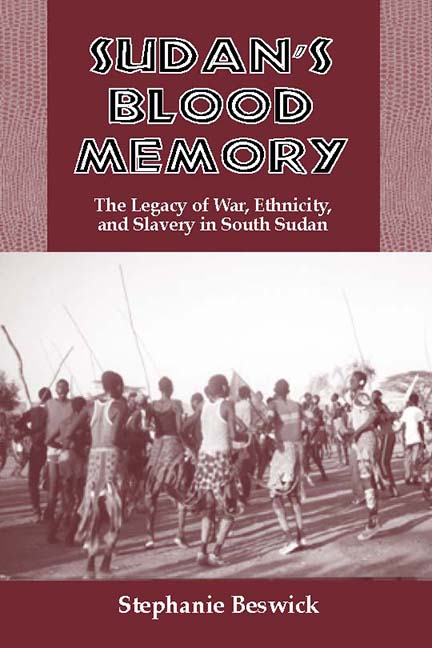Book contents
- Frontmatter
- Dedication
- Contents
- Maps
- Preface
- Acknowledgments
- A Note on Orthography and Languages
- A Note on Sources
- Map
- 1 Introduction
- 2 Geography and Brief History of Sudan
- 3 The Changing Nilotic Frontier
- The Ethno-Historical Formation of Southern Sudan
- The Ascendancy of the Dinka in Southern Sudan
- 9 Grain, Cattle, and Economic Power
- 10 Totemic Religion
- 11 Human Sacrifice, Virgins, and River Spirits
- 12 Priests, Politics, and Land
- 13 Ethnic Expansion by Marriage
- 14 Sovereign Nations within the Dinka
- Foreign Intrusion and Its Consequences
- Notes
- Glossary
- Bibliography
- Index
13 - Ethnic Expansion by Marriage
from The Ascendancy of the Dinka in Southern Sudan
Published online by Cambridge University Press: 23 July 2019
- Frontmatter
- Dedication
- Contents
- Maps
- Preface
- Acknowledgments
- A Note on Orthography and Languages
- A Note on Sources
- Map
- 1 Introduction
- 2 Geography and Brief History of Sudan
- 3 The Changing Nilotic Frontier
- The Ethno-Historical Formation of Southern Sudan
- The Ascendancy of the Dinka in Southern Sudan
- 9 Grain, Cattle, and Economic Power
- 10 Totemic Religion
- 11 Human Sacrifice, Virgins, and River Spirits
- 12 Priests, Politics, and Land
- 13 Ethnic Expansion by Marriage
- 14 Sovereign Nations within the Dinka
- Foreign Intrusion and Its Consequences
- Notes
- Glossary
- Bibliography
- Index
Summary
“We can only marry foreign people, we can never marry our relations.”
Samuel Aru Bol, Agar Dinka“‘We the Dinka’ are a group of people that have all been assimilated . . . and the Atwot are the latest to be absorbed.”
David Deng Athorbei, Apak Atwot, whose great-great-grandfather was a Kakwa princeToday the Dinka are the largest ethnic group in Sudan. The size of their population centuries ago as they migrated into their present homelands is difficult to estimate. The only historical clue is given by the oral histories of the seventeenth-century Shilluk who describe the Dinka as moving along their borders in “hordes,” suggesting a sizeable population relative to their own. Dinka oral histories, however, support the view that they acquired much of their population after reaching the South by way of massive ethnic absorption of non-Dinka peoples. By the twentieth century Dinka ethnic expansion in Southern Sudan was such that their ethnic circumference was one thousand miles. Yet, in the South today one cannot easily “become Dinka.” It is only by marriage that a person and his/her children can be ethnically integrated into the community. Sandra Greene suggests that gen der studies and ethnicity in precolonial Africa cannot be understood in isolation, and I believe that this argument also applies to the history of Southern Sudan.
The Difficulties of “Becoming Dinka”
With few exceptions, adopting Dinka identity outside of marriage has been extremely difficult both in the past as well as in the present day. On the other hand, it is far easier to adopt the identity of the close neighbors of the Dinka, the Nilotic Nuer. In modern times ethnic incorporation into the latter society has been accomplished by means of a ritual of sacrifice. For the Dinka, however, there is no such cultural act or ceremony available for incorporating foreigners into their amalgam. Nor do the Dinka fully accept, in a social or political sense, non-Dinka peoples living in their midst. According to Ciec Dinka Gordon Matot Tut: “Nuer law [and custom] is different from Dinka law…. The Nuer have one thing that differs from the Dinka. When you are among them you are not discriminated against.
- Type
- Chapter
- Information
- Sudan's Blood Memory , pp. 134 - 142Publisher: Boydell & BrewerPrint publication year: 2004

